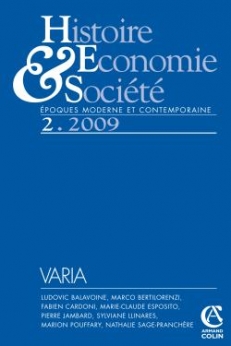
Histoire, économie & société (2/2009)
Pour acheter ce numéro, contactez-nous
Recevez les numéros de l'année en cours et accédez à l'intégralité des articles en ligne.
Cet article décrit l’histoire de l’usine de Pise de Saint-Gobain de sa fondation en 1887 à la Première Guerre mondiale en analysant la manière par laquelle le cartel international des producteurs a influé sur la stratégie de développement de l’usine. Saint-Gobain avait conçu une « saison » d’investissement à l’étranger dans un cadre de forte compétition avec les autres grandes entreprises européennes à la fin du XIXe siècle et Pise représentait une partie importante de cette stratégie. Dès 1904, trois facteurs ont modifié la situation : 1) la branche de la glace connut une grave crise de surproduction ; 2) le marché italien, au contraire des autres marchés, s’agrandit de plus en plus ; 3) les entreprises s’associèrent en cartel international. Dans ce nouveau contexte, Saint-Gobain changea son attitude envers l’usine de Pise. Elle devint une sorte d’« avant poste » pour garantir l’importation en Italie des autres usines qui ne trouvaient pas de débouchés sur leurs marchés nationaux à cause de la surproduction. Mais la Première Guerre mondiale vint changer la situation.
This article describes the history of Saint-Gobain’s factory in Pisa since her foundation (1887) to the First World War with particular regard to the influxes that the international cartel had over company’s strategies. Saint-Gobain started a “season” of foreign direct investments in the end of XIX century to compete with other European leading companies, and the investment of Pisa was an important part of this strategy. From 1904, three factors changed the situation : 1) the European plate-glass industry come into a serious crisis of overproduction ; 2) the Italian market, opposite of others, expanded itself ; 3) the leadings companies formed an international cartel. In this new circumstance, Saint-Gobain changed attitude for its Italian plant of Pisa. The plant became a kind of “garrison-factory” in guaranteeing the imports in Italy of other European plants that couldn’t find any outlets in their national market because of overproduction. Only the First World War modified this situation.

